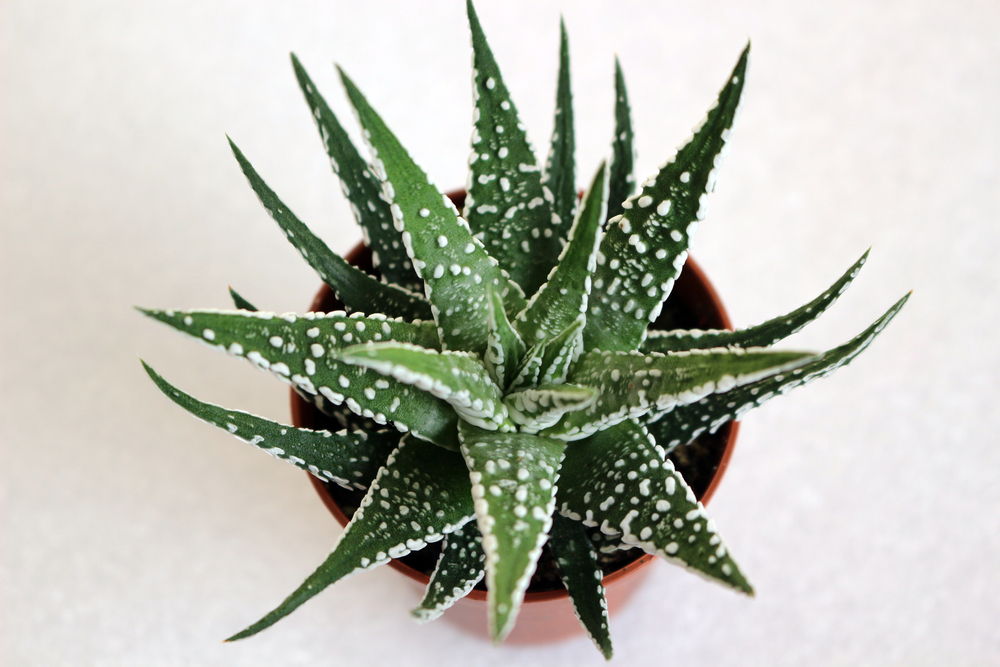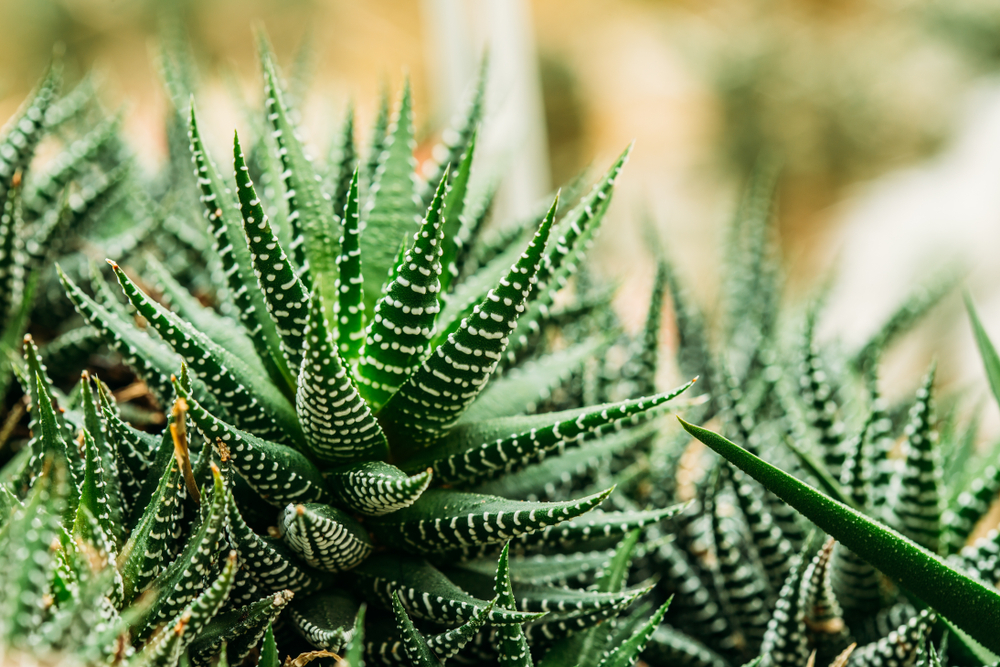Are you a big lover of succulents looking for something more fascinating to add to your indoor succulent garden? Haworthiopsis fasciata is a perfect choice for every respectable succulent gardener. This fascinating succulent is known for its thick, dark green spiky leaves with horizontal bumpy white strips on the outside.
Because of its leaves appearance, it is commonly known as zebra haworthia or zebra plant.
| Botanical Name | Haworthia fasciata |
| Common Name | Little Zebra Plant, Zebra Haworthia, Zebra Plant |
| Plant Type | Perennial |
| Flower Color | White |
| Size When Mature | 5” – 8” |
| Bloom Time | Summer |
| Sun Requirements | Partial Sun |
| USDA Hardiness Zones | Zones 10 and 11 |
| Soil PH Range | 6 and below |
| Soil Type | Acidic, well-draining |
| Water Needs | Medium |
| Native Area | South Africa |
If you are looking for a succulent to add to your indoor garden, haworthiopsis fasciata is an easy-to-care plant perfect for gardeners of all levels. Even with its small stature, it is sure to make a statement in living spaces. In this comprehensive care guide, you will find everything you need to know about growing zebra haworthia.
What you Need to Know About Haworthiopsis Fasciata
Haworthiopsis fasciata is an irresistible species of succulents. Growing to around 10 cm tall, this generally small succulent is prized for its engrossing leaves and enjoys lots of popularity as an ornamental plant worldwide. It has thick, triangular green leaves decorated with white, crested strips on the outside. The inside of the leaves is plain and smooth.
For gardeners who care more about classification, haworthiopsis fasciata belong to the Asphodeloideae family and the genus Haworthia. It is native to South Africa and will grow best in places that offer similar climate conditions. Haworthiopsis fasciata plants are not cold-hardy. They won’t tolerate temperatures below 30 degrees Fahrenheit.
In North America, haworthiopsis fasciata is suitable for outdoor planting in USDA planting zone 10 or warmer.
While these succulents are usually grown for their attractive leaves, they produce flowers in ideal conditions. When grown outdoors and after successfully undergoing proper winter dormancy, your haworthiopsis fasciata plants will send up stalks with tiny, tubular, white flowers somewhere in the summer. The flowers have no fragrance, and inflorescences can grow up to 30 cm tall.
If you don’t want the flowers, you can always cut the stalks with a pair of clean scissors.
Zebra haworthia is non-toxic but non-edible at the same time. It poses little to no risks to your pets and kids.
For beginner gardeners, this succulent is very similar and often confused with its cousin haworthiopsis attenuata, a succulent with tubercles on both leaf surfaces.
How to Care for Haworthiopsis Fasciata
Here’s everything you need to know about growing and caring for a thriving haworthiopsis fasciata:
Light
Haworthiopsis fasciata grows best in partial sun, 4-6 hours of sunlight, but can tolerate low light conditions. For the best results, plant your zebra haworthia in an area that receives a lot of bright indirect sunlight, not direct sunlight.
If you are growing haworthiopsis fasciata indoors, place it near east or south-facing windows, where there is plenty of natural light.
Of significance, when this succulent receives too much sunlight, its leaves may turn white, yellow, or red.
Water and Soil Needs
Haworthiopsis fasciata grows naturally in acidic sands and will appreciate a substrate that mimics its original soil conditions. If you are potting these succulents, choose a potting mix formulated for succulents or cacti. The best substrate should have excellent drainage and a pH of 6 or below.
Like most succulents, haworthiopsis fasciata thrives with regular moisture, not waterlogged. In spring through fall, when your zebra haworthia are actively growing, water them and wait for the potting mix to dry between waterings. Overwatering can quickly kill the plant.
Temperature Requirements
Haworthiopsis fasciata plants will appreciate growing within a temperature range of 60°F to 85°F. While they are not cold-hardy, they can tolerate temperature drops to 30 degrees Fahrenheit.
These succulents are best suited for USDA plant hardiness zones 10 and 11. In other USDA hardiness zones, it is best to grow them indoors.
Fertilizer
While haworthiopsis fasciata are not heavy feeders, they are slow-growing succulents, so you will need to feed your plants too often. Feed your haworthiopsis fasciata with dilute cactus fertilizer twice every year, particularly in spring and summer.
Common Diseases
As a haworthiopsis fasciata grower, you will have to deal with scale insects and sometimes spider mites. Scale insects attack your haworthiopsis fasciata leaves, robbing the plant of essential nutrients.
Haworthiopsis fasciata propagation
Haworthiopsis fasciata is propagated through offsets. Mature plants will produce small offsets that sprout at their bases. Pull these offsets, allow them to dry for about two days, and replant them in well-draining acidic soil.


